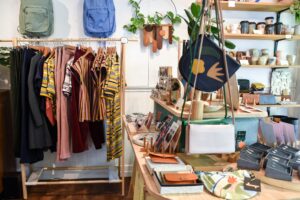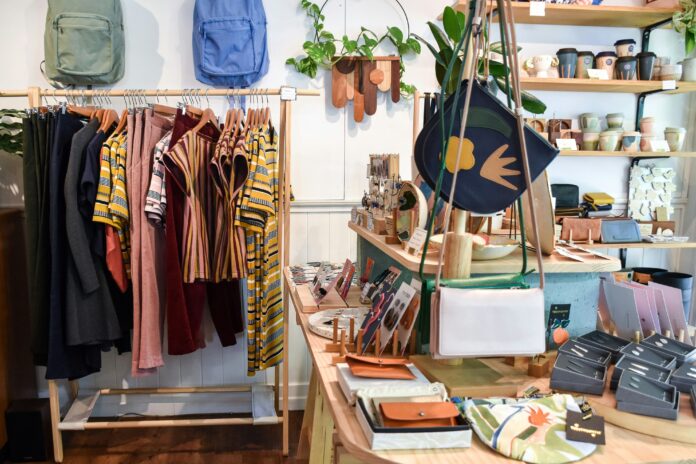In recent years, the fashion industry has come under intense scrutiny for its significant environmental impact. Known as one of the world’s most polluting industries, fashion has contributed to issues such as water pollution, excessive waste, and harmful chemical usage. However, amid increasing consumer awareness and pressure from environmental activists, the sector is slowly but surely shifting toward more sustainable practices. This transition marks a crucial step toward reducing the industry’s ecological footprint and embracing a greener future.
1. The Environmental Impact of Fast Fashion
Fast fashion—characterized by rapid production cycles and low-cost clothing—has led to a culture of disposable fashion, where garments are worn a few times and then discarded. According to studies, the average American throws away approximately 81 pounds of clothing annually, most of which ends up in landfills. The fashion industry is also responsible for nearly 10% of global carbon emissions, which is more than all international flights and maritime shipping combined.
Aside from waste, textile production requires an enormous amount of water. For instance, producing a single pair of jeans can use up to 2,000 gallons of water. The heavy use of toxic chemicals in fabric dyeing and the release of microplastics from synthetic fabrics like polyester further exacerbate environmental damage, contributing to water pollution and harming marine ecosystems.
2. The Shift Towards Sustainable Fashion
In response to these issues, many brands are now embracing sustainable fashion practices. Slow fashion—a movement that encourages mindful consumption and ethical production—is gaining traction. This shift emphasizes quality over quantity, urging consumers to buy fewer but better-quality garments that last longer.
Fashion giants like Patagonia and Levi’s have set the bar high by incorporating sustainable practices into their business models. For instance, Patagonia’s Worn Wear initiative promotes the repair, reuse, and recycling of clothing, while Levi’s has launched jeans made with less water and eco-friendly dyes. These companies demonstrate that it is possible to be both profitable and sustainable, paving the way for others to follow suit.
3. The Role of Technology in Sustainable Fashion
Innovative technologies are playing a pivotal role in transforming the fashion industry. Brands are using AI and machine learning to optimize production processes, reduce waste, and even predict fashion trends to avoid overproduction. Moreover, companies like Stella McCartney are exploring sustainable materials such as mycelium leather (made from mushroom roots) and lab-grown fabrics that mimic the look and feel of traditional textiles without the associated environmental impact.
Blockchain technology is also being used to enhance transparency in supply chains. By tracking the entire lifecycle of a product, consumers can verify whether the materials were ethically sourced and produced. This transparency builds trust between brands and consumers, encouraging more sustainable purchasing decisions.
4. Circular Fashion: Reducing Waste Through Recycling and Upcycling
Another promising trend is the rise of circular fashion, which focuses on minimizing waste by keeping garments in use for as long as possible. Instead of the traditional linear model of “make, use, dispose,” circular fashion promotes recycling, upcycling, and repurposing materials.
Brands like H&M have introduced clothing recycling programs where customers can bring in old garments to be repurposed into new collections. Additionally, startups like ThredUp and Depop are leading the charge in the resale market, making second-hand fashion more accessible and trendy. This shift not only reduces waste but also encourages consumers to rethink their approach to fashion consumption.
5. Ethical Fashion: Beyond Sustainability
Sustainable fashion is not just about the environment—it’s also about ethical labor practices. The fast fashion industry has been notorious for exploiting low-wage workers in developing countries, often in unsafe conditions. In contrast, the sustainable fashion movement prioritizes fair wages, safe working environments, and ethical sourcing.
Brands like Everlane and People Tree are leading the way by adhering to strict ethical standards, ensuring that their garments are produced under fair labor conditions. By choosing to support these companies, consumers can make a positive impact on the lives of workers around the world.
6. What Consumers Can Do: Small Changes, Big Impact
While it’s encouraging to see brands making strides toward sustainability, consumers also play a vital role in driving change. By adopting conscious consumption habits, individuals can reduce their environmental footprint. Simple steps like buying fewer, better-quality items, supporting ethical brands, and participating in clothing swaps can make a significant difference.
Additionally, consumers can extend the life of their clothing by learning how to repair and repurpose garments, instead of discarding them at the first sign of wear. The rise of DIY fashion and upcycling communities on platforms like Instagram and Pinterest is helping to normalize these practices, turning sustainable fashion into a fun and creative pursuit.
7. The Future of Fashion: Embracing Sustainability
As the fashion industry evolves, the shift toward sustainability is not just a trend but a necessity. With the effects of climate change becoming more apparent, the need to reduce waste, conserve resources, and embrace ethical practices has never been more urgent. While challenges remain—such as the high cost of sustainable materials and the slow pace of regulatory changes—the momentum is clearly building.
The future of fashion lies in innovation, collaboration, and a commitment to doing better. Whether it’s through the development of new sustainable materials, the adoption of circular business models, or simply encouraging consumers to rethink their purchasing habits, the industry is on the brink of a green revolution.
By embracing sustainability, the fashion world can not only protect the planet but also create a fairer, more ethical industry that benefits everyone involved—from the workers who produce the garments to the consumers who wear them.

Views: 5






